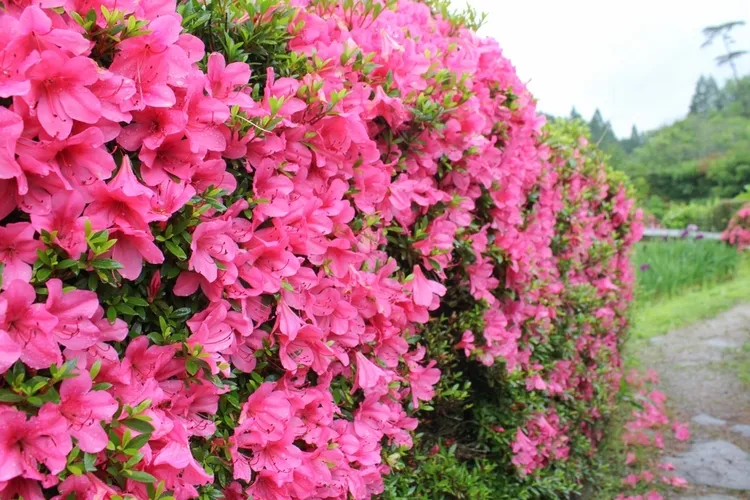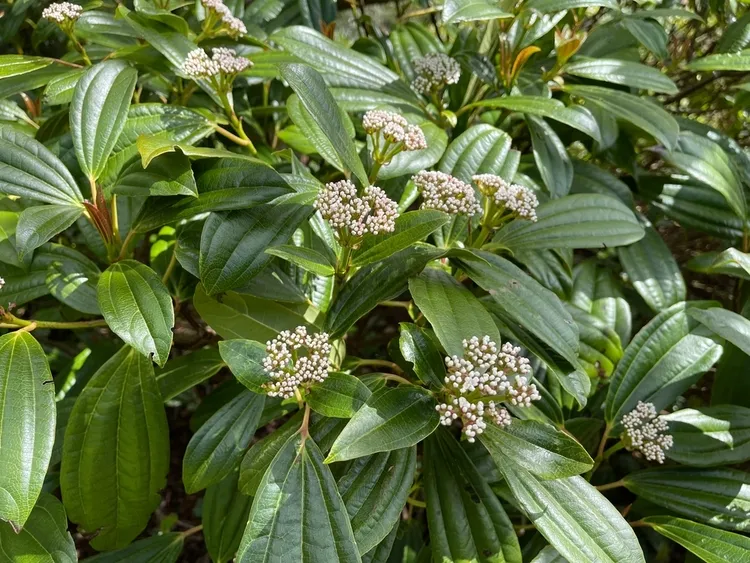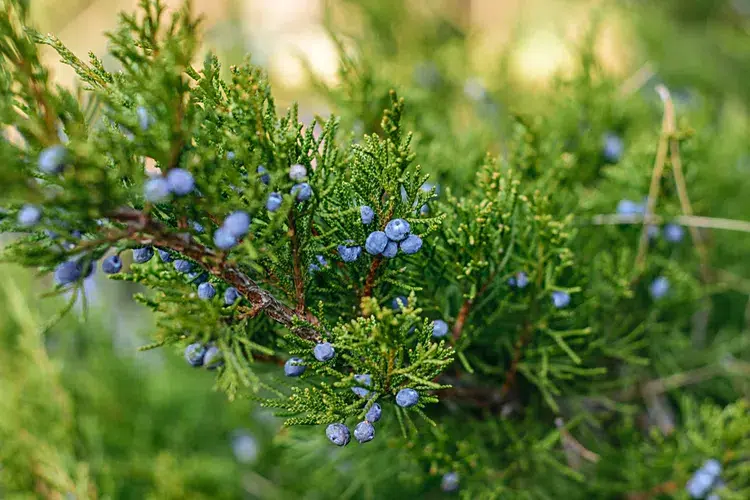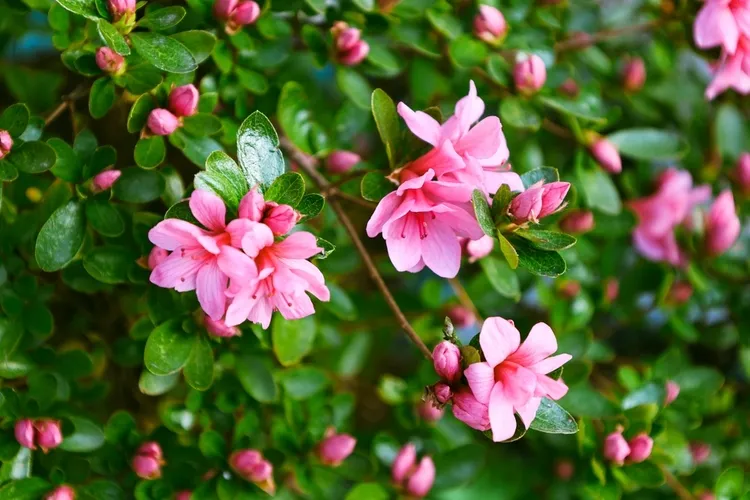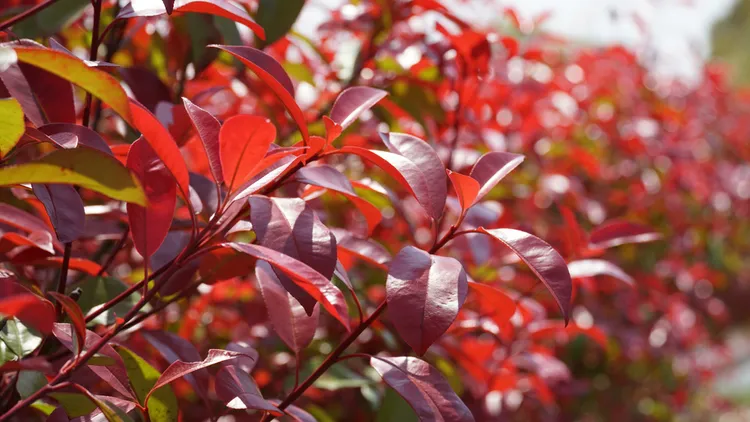In winter, the garden is a sad place that lacks greenery and therefore looks gloomy and melancholic. How do you bring back the greenery? With the help of some captivating plants that keep their leaves all year round! So, let’s see which frost resistant evergreen shrubs to plant to have an exterior full of life during the cold season.
Frost Resistant Evergreen Shrubs: The 4 Plants You Absolutely Must Have in the Garden This Year
If you are looking to beautify your garden in winter, you have certainly come to the right place. Today, the editorial team reviews the frost resistant evergreen shrubs by revealing the 4 plants that you absolutely must plant in the garden.
David Viburnum (Viburnum Davidii)
Need a shrub with white blooms and evergreen foliage? David viburnum is an excellent choice. In addition to its white blooms in spring, the plant also produces turquoise blue fruits that last well into winter. Easy to care for and very resistant to frost, viburnum requires a lot of water and grows slowly.
- When and where to plant?
David viburnum can be planted at two periods of the year: from September to November, and in March-April. The first is preferable, so don’t hesitate to get started tomorrow! Plant in ordinary, fresh and slightly acidic soil, add a little heather soil. For a compact, bushy shrub, prefer sunny spots as shade makes the plant creep. Although viburnum can withstand temperatures down to -4F/-20C, it is important to protect it from cold winds in winter.
- How to plant?
To plant viburnum davidii in soil, you only need to follow a few simple steps. The first, of course, is to make a hole and place the heather soil at the bottom. Next, you need to loosen and clean the soil, removing stones and weeds. The next step is to combine the garden soil with potting soil and place a layer at the bottom of the hole before positioning the root ball in the center. Finally, fill the hole with soil, pack and water thoroughly.
Also read: Unique Outdoor Vegetable Garden Ideas for Your Patio or Small Backyard
Juniper (Juniperus)
Evergreen, easy to care for and very hardy, juniper is also one of the plants resistant to diseases and parasites. This small, very decorative conifer adapts to all gardens and all regions and offers several varieties to choose from.
- When and where to plant?
Juniper is best planted outdoors in fall, before the first frosts set in. It appreciates full sun, but partial shade is also suitable. As a general rule, the shrub prefers drained, sandy and stony soil. Yet, these requirements may vary depending on different species and varieties. For example, Juniperus communis grows in dry, chalky soil while Juniperus horizontalis fears it. So it’s important to find out exactly which species you want to buy.
- How to plant?
Prepare a basin of water at room temperature and immerse the container in it for an hour to properly hydrate the root ball. Weed and dig the soil before digging a 3 ft/1 meter hole in all directions. Add sand if the soil is clayish. Next, put on gloves, as some junipers have needles. Remove the plant from the pot and place it in the hole before filling in and packing around its base. Water. Water regularly until the first signs of recovery, then continue for the first two years.
Also read: Sun Loving Shrubs for a South Facing Patio Garden: The Best Plants to Grow in Pots or Soil
Azalea (Rhododendron)
Among the frost resistant evergreen shrubs, azalea offers spectacular blooming from April to June. First of all, let’s clarify that the Japanese azalea is evergreen, while the Chinese azalea is deciduous. We recommend the following evergreen azaleas: Amoenum, which can tolerate temperatures down to 5F/-15C, and Kirin and Silver Queen, which can withstand temperatures down to 10F/-12C.
- Where and when to plant?
Good news: this is the ideal time to plant your rhododendrons. Planting generally takes place from fall to spring, between September and early May, always frost-free. Azaleas grow best in acidic, humus-rich, well-drained soil. Heavy, chalky soil should be avoided. The Japanese azalea thrives in partial shade and can withstand a maximum temperature of 77F/25C. In other words, it is best to avoid planting it in hot, dry regions.
- How to plant?
Start by digging a hole that is wider than it is deep. Then, mix heather soil with garden soil. Position the azalea in the center and fill in lightly, the plant does not need to be buried deeply. Water generously.
Caution: Rhododendron is a toxic plant, containing substances known as grayanotoxins. Ingesting the leaves or flowers of the azalea causes symptoms of poisoning such as hypotension, atrial fibrillation, bradycardia, dizziness, nausea and vomiting.
Also read: Hardy Perennial Plants for Outdoor Pots That Will Survive Winter
Photinia Red Robin
Photinia Red Robin is probably the most widely grown evergreen hedge shrub! And with good reason. Thanks to the flamboyant red colors of its foliage, photinia is a must in the garden, whatever the season.
- Where and when to plant?
Although photinia can be planted throughout the year, the best time to plant it is in fall. In terms of location, place the plant in sun or half-shade, but sheltered from winds. Photinia appreciates well-drained, light, humus-rich soil.
- How to plant?
The first thing to remember is that there should be a minimum distance of 3,2 ft/1 meter between plants, and that the planting hole should be proportional to the volume of the container. Clean the soil, dig the hole and add 1lb/500 grams of mature compost. In case of clay soil, add sand. Hydrate the root ball, plant and water generously.
Interesting fact: As mentioned above, this red evergreen shrub is renowned for its flamboyant color in spring and fall. These are the young shoots that turn red before turning dark green when they become older. However, they turn red again before dropping.
Also read: Trees, Shrubs, Flowers: 10 Plants Not to Prune in Winter to Avoid Damaging Them

